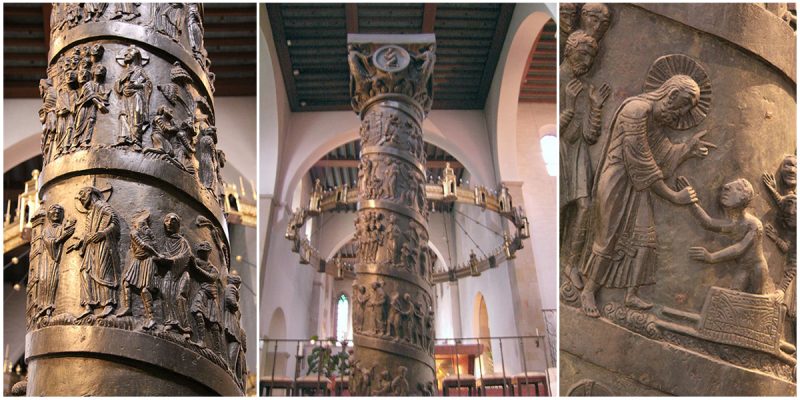Commissioned by Bernward, the 13th bishop of Hildesheim, the Bernward Column is a Romanesque bronze spiral column which dates from 1015 AD.
The column, also known as the Christ Column, was originally intended for St. Michael’s Church in Hildesheim, Germany. The church is one of the most magnificent basilicas in Germany.
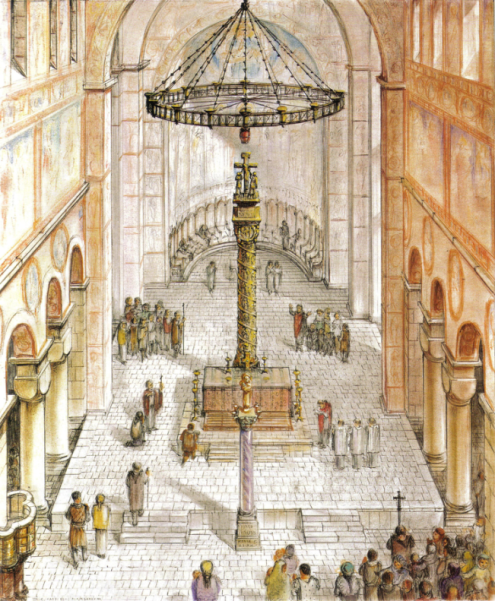
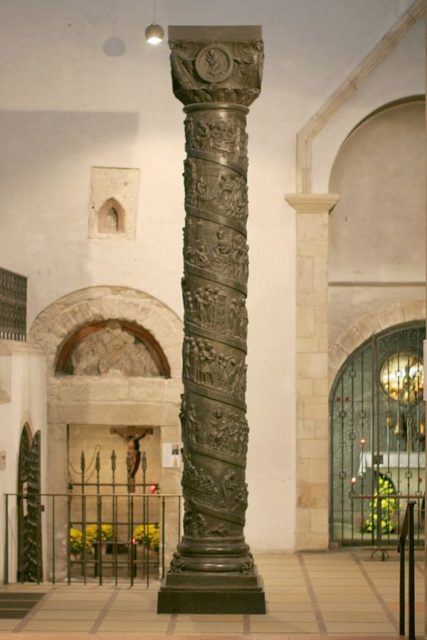
When he lost his parents at an early age, Bernward was raised by his uncle Bishop Volkmar of Utrecht. He studied at the cathedral school of Heidelburg and at Mainz, where he became chaplain at the imperial court in 987. Six years later, he was elected Bishop of Hildesheim. He also was appointed as a tutor by Empress-Regent Theophano to her six years old son Otto III.
The Bishop had an interest in architecture, painting, mathematics, and he also manufactured a few silver and golden ecclesiastical vessels and ornaments. He died on November 20th, 1021, and was canonized by Pope Celestine III in 1193.
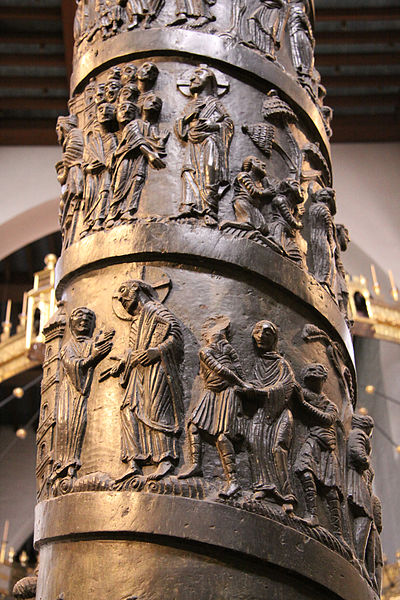
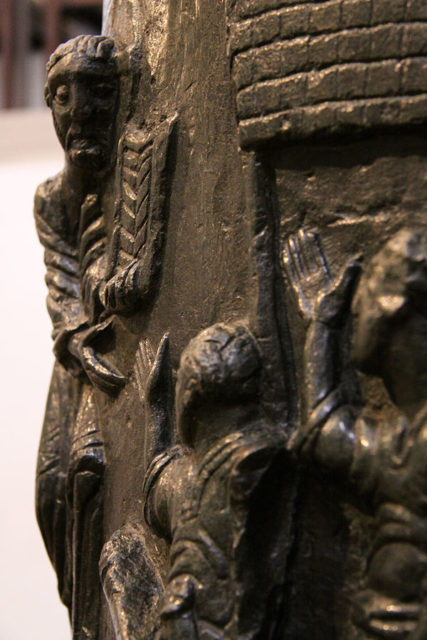
This masterpiece of Ottonian art and bronze-casting depicts 24 scenes taken from Christ’s life arranged in a helix. The story starts with Christ’s baptism in the Jordan River (illustrated at the bottom) and ends with his Triumphal Entry into the city of Jerusalem, depicted at the top of the column. The column is 12.4 ft high and 23 inches in diameter and similar to that of the Roman Emperor Trajan that still stands in Rome and commemorates his victory in the Dacian Wars.
The Bishop probably drew his inspiration from that unique object when he was in Rome. It was originally topped with a triumphal cross with the figure of the crucified Jesus. Unfortunately, in 1544, during the Reformation, the cross was melted down by iconoclasts and recast as a cannon.
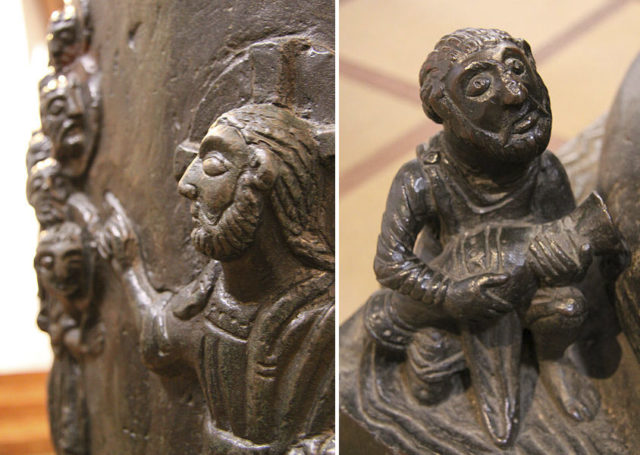
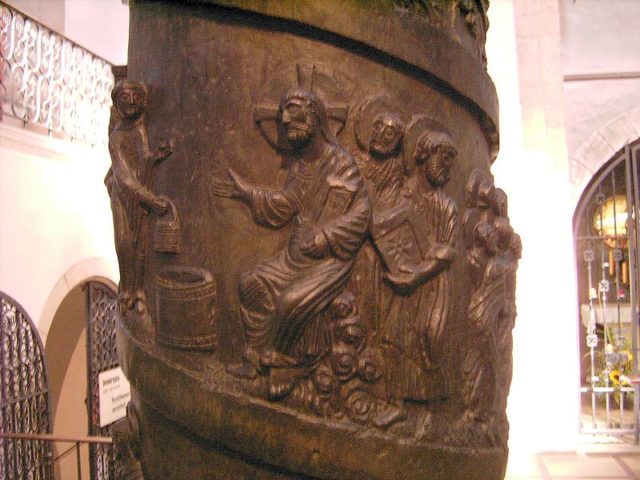
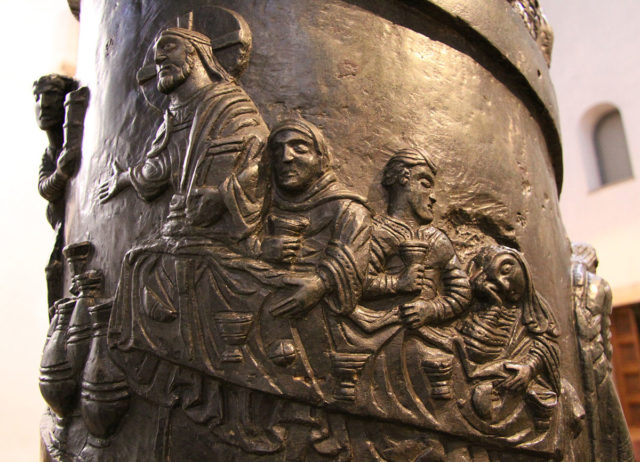
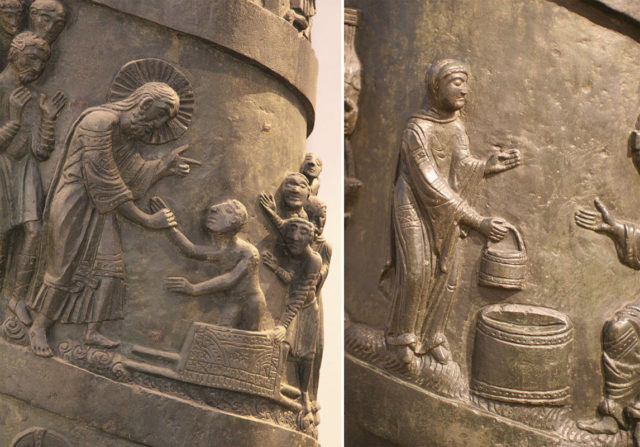
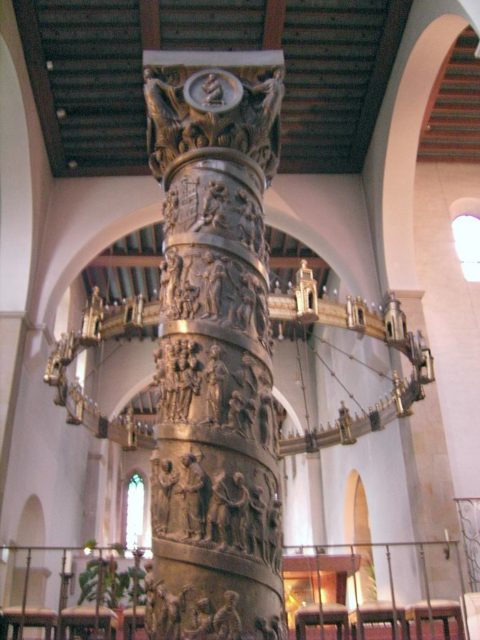
The location of the column changed over and over again. In 1893, the column was moved to a courtyard and later to Hildesheim Cathedral, where it has remained until today. In 1985, the Bernward column was added to the list of the UNESCO cultural heritage, along with another cast-bronze masterpiece made by the Bishop, the Bernward door, which illustrates the Nativity, Passion, and resurrection of Christ.
Above the Bernward Column, there is another remarkable medieval treasure– a giant wheel, Hezilo Chandelier, dating from 1061 as the oldest of the four such chandeliers that have survived.
